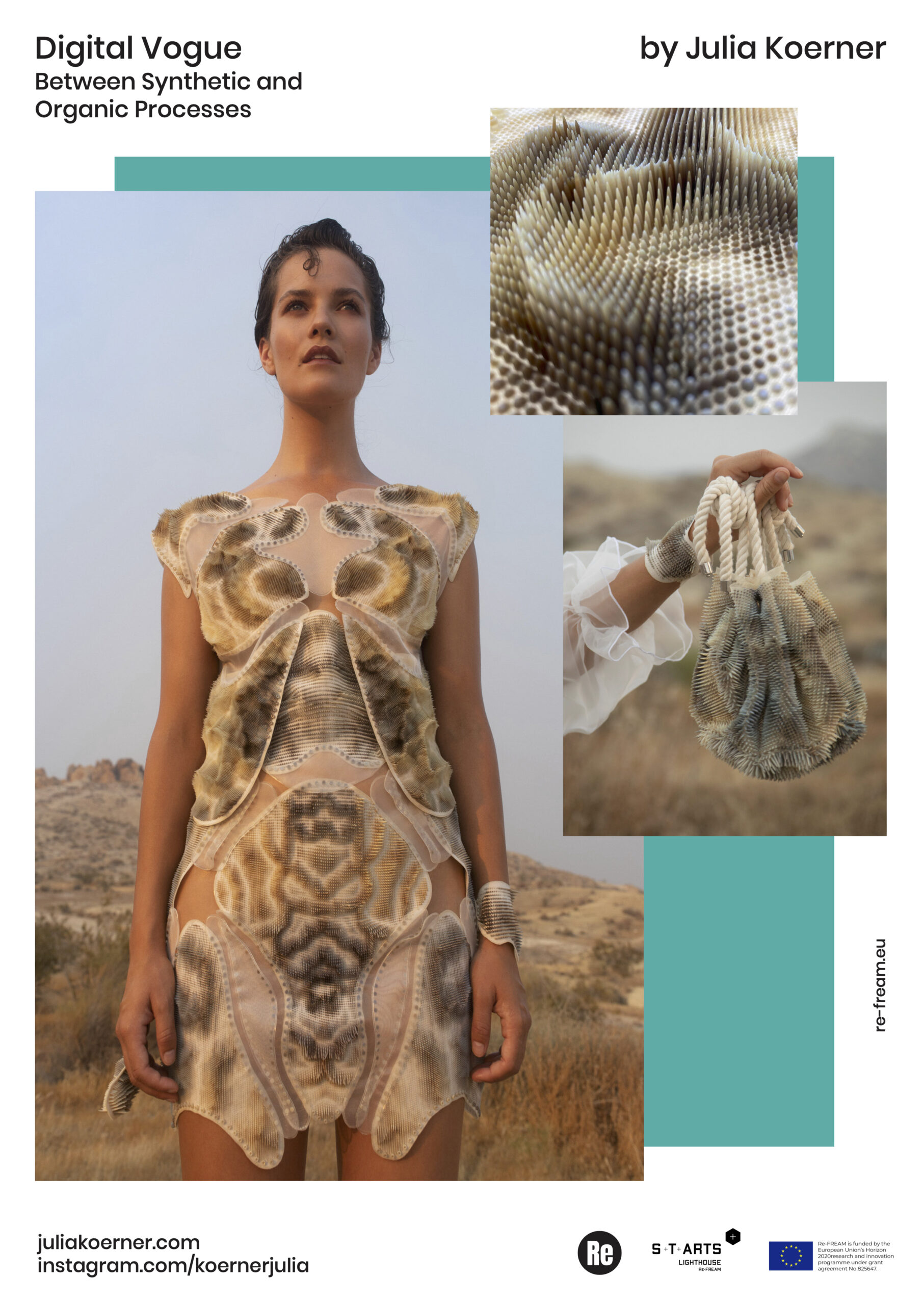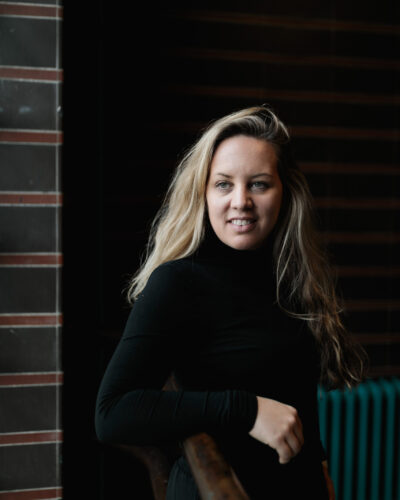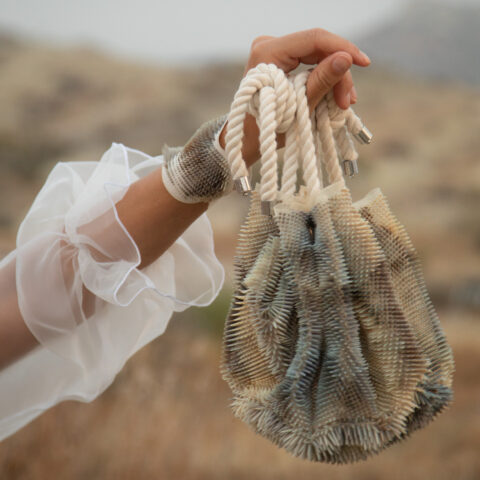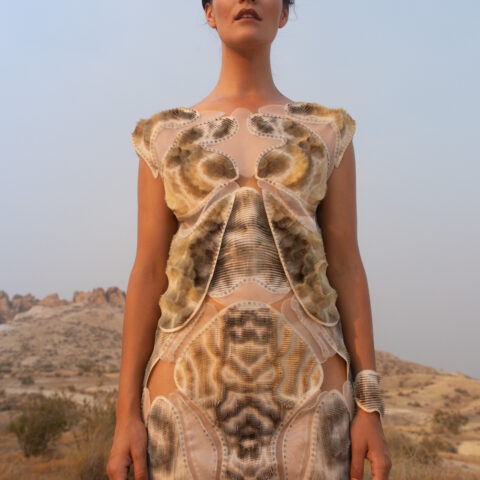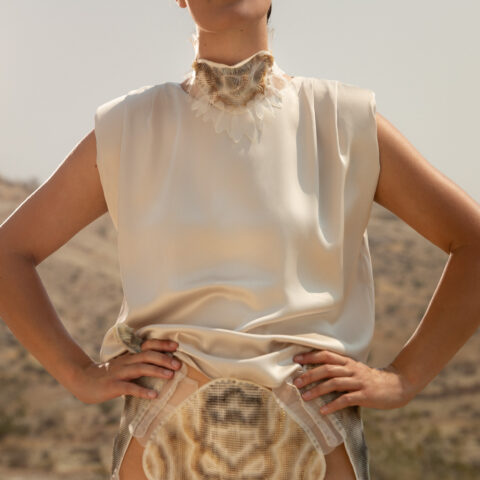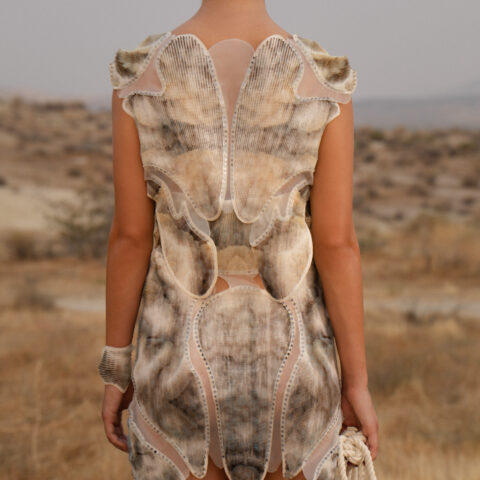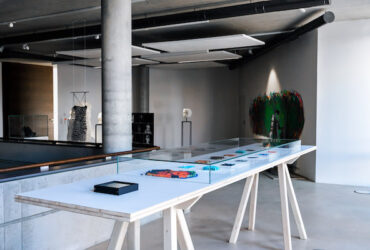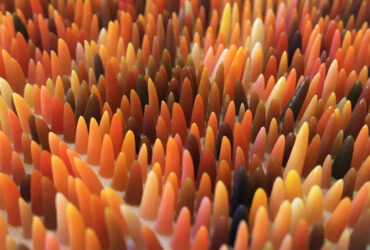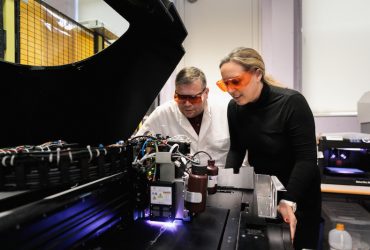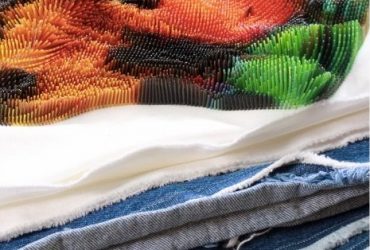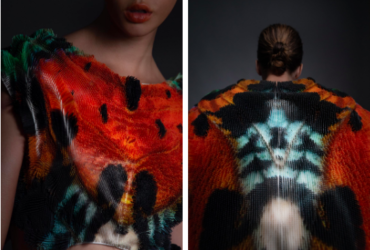When the highly acclaimed designer Julia Koerner asked herself how computational design can improve fashion fabrication, she searched beyond 3D code. She sought and found answers in seams and muscle tissues, in sea crystals, and in the hot desert air. Her striking computational designs are the results of taking workflows apart to reconfigure more sustainable production processes. Highly specialized in the domain, she was able to create structures which reduce printing waste. Researching mass personalization through body scanning also led her to reconsider the joining of garments. How can clothing morph to remain adjustable – not only to each wearer, but also to the wearer’s changing bodies ? Can new forms of digital couture respect our environment – and allow for adaptation to both our bodies and to our surroundings ? Her multi-functional Arid collection provides us with first solutions.
Creating unique and personalized garments with utmost skill is a tradition and privilege of couture – which Julia Koerner aims to develop at scale. Her architectural and computational expertise have allowed her to configure many haute couture designs, redefining 3D digital code as a craft in the process. Her central Re-FREAM objective was applying her digital mastery to develop wider access to personalization, replacing standardized sizing. As the tactile comfort of 3D designs remained a challenge, she began by designing and printing Digital Vogue structures directly onto fabrics, exploring the bonding capabilities with sustainable textiles. Printing without any support material drastically reduced the negative waste generated in traditional 3D printing. Next, she focused on pattern creation, opting to use 3D scanned muscle definitions to define the garment structures. This led her to new paths for garment fabrication, including new methods of joining garment parts through 3D printed snap joints. Finally, drawing on her explorations, she created a cascading remodulable 3D printed garment design, which can be recomposed around the body. Customization is thereby integrated beyond the initial fit – the wearers can also recompose the garment at will.
Koerner’s seductively tactile designs explore new digital fashion fabrication workflows. The soft topographies of her 3D textiles fabrications envelop the body with couture precision – without sewing. By fully digitizing each step, she steers us towards a future in which long-lasting garments can be sustainably printed and assembled locally. In addition to reducing shipping, carbon footprint and traditional manufacturing energy costs, color-printing garments also allows for wide color palettes without the water consumption from dying processes.
Apart from comfort, a central limit to large scale 3D garment printing has been the printer bed size, just as in traditional woven fabric dimensions are limited by the sizes of looms. This results in the necessity of assembly. Koerner addresses this resource-intensive procedure through the imprinting of snap closures. The new joinery methods developed during Re-FREAM could lead to large scale applications in 3D garment printing, and potentially impact garment and textile assembly in general.
Koerner’s final 3D printed prototype can be worn as a dress. Its 38 earth tone composites can also be disassembled and reassembled into a variety of garments, such as a jacket, a skirt, a choker, as well as accessories including a bag and rings. They catch the light when they move, evoking the shimmering crystalline formations of the Dead Sea, whose mineral structures were a key source of inspiration for Koerner. Triggered by a Re-FREAM conversation, the modular compositions also echo the interplay of the Hub collaborations, enmeshing design and industry with science and technology.
Shooting her final garment in the desert heat, while wildfires were raging across the world, took her designs one step beyond the concept of “bio-inspiration”. The name of the final collection, Arid, dawned on Julia in the dry air, documenting another shift. Whereas her synthetic-organic designs were always inspired by natural structures, they were now drawing inspiration from climatic change.
The project started under the name Digital Vogue – Between Organic and Synthetic Processes; these processes eventually evolved into a modular garment collection Arid, first presented at the ARS Electronica Festival. The high mediatization and museum exhibitions of Koerner’s work across the globe guarantee the visibility of the prototype on a large scale. Yet the single prototype can only start to reflect the experimentation she undertook with the four different technology partners. Future commercial developments of the research could be found in the wealth of scientific, empirical and artistic insights gained from Re-FREAM – to ultimately develop a full collection.
The Project
Within the Re-FREAM project “Digital Vogue – Between Organic and Synthetic Processes”, Julia Koerner (JK Design GmbH) researches 3D to 2D to 3D relationships in 3D-Printed Fashion together with the technology partners Stratasys, Haratech, Profactor and consulting partner Department of Fashion & Technology, University of Art and Design Linz.
The research focuses on digitally translating patterns into algorithms and exploring multi-colour 3D printing on fabric, inspired by microscopic imagery of natural artefacts. The ultimate goal within Re-FREAM is that the design workflows can be fully automated; from design to production leading to ‘local production’ and ‘mass customisation’ and ‘rethinking urban manufacturing’.
The Technologies
The digital textile innovation consists of multicolor 3D Polyjet printing directly onto textiles, using the 3DF Polyjet printer by Stratasys, without any support material. After benchmarking adhesion for a wide variety of fabric testing, including different weaves and dyes, a sustainable hemp-based non-dyed fabric best fulfilled the purpose and goals of the project.
The applied 3D printed textile geometries were inspired by organic structures, while the garment structures were based on human tissue, allowing for optimal modular assembly. Sewing is replaced by 3D printed joining closures.
The Partners
Koerner worked within the Additive Manufacturing Hub of Re-FREAM, focused on urban manufacturing. She partnered with Stratasys and Profactor for the latest 3D printing innovation, while Haratech and Kunstuniversität Linz consulted for 3D scanning.
The Artist
Julia Koerner is an award-winning Austrian designer working at the convergence of architecture, product and fashion design. She is internationally recognised for design innovation in 3D-Printing, Julia’s work stands out at the top of these disciplines. Her designs have been featured in the National Geographic Magazine, VICE, WIRED and the New York Times among other publications. Museum and Institutions which have exhibited her work include the Metropolitan Museum of Art in New York (MET), Palais des Beau Arts in Brussels, Museum of Applied Arts MAK Vienna, Ars Electronica, the Art Institute of Chicago and the High Museum of Art in Atlanta among others. The constantly intriguing aspect of Julia’s work is its embodiment of a beautiful organic aesthetic.
Julia is founder of JK Design GmbH, specialising in digital design for 3D-Printing. In 2015, Julia launched an entirely 3D-Printed ready-to-wear collection entitled ‘Sporophyte’. Her collaborations involved 3D-Printed fashion pieces developed with Haute Couture Houses for Paris Fashion week and 3D printed costumes for Hollywood entertainment productions such as Marvel’s Black Panther in collaboration with Ruth Carter which recently won an Oscar for Best Costume Design. She further recently collaborated with Swarovski on a showpiece which displays Swarovski’s continued strive for innovation and the early developments of 3D-printing technology with glass.
Born in Salzburg, Austria, Julia received master degrees in Architecture from the University of Applied Arts in Vienna and the Architectural Association in London. She is currently based between Los Angeles and Salzburg and has previously practiced in London and New York. Since 2012 Julia has been a faculty member in the Architecture and Urban Design Department at the University of California in Los Angeles (UCLA). She previously held academic appointments at the University of Applied Arts in Vienna, Lund University in Sweden and the Architectural Association Visiting Schools in France and Jordan.
Follow Julia



